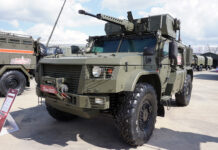Russia’s RS-28 Sarmat heavy intercontinental ballistic missile (ICBM) has entered operational service. A 1 September 2023 report from Russian news agency TASS quoted Yury Borisov, the head of Russia’s Roscosmos state space corporation, as saying that day that the Sarmat system “has assumed combat alert posture”.
One of six new Russian strategic weapons heralded by Russian President Vladimir Putin on 1 March 2018, the Sarmat ICBM was designed to replace Russia’s ageing R-36 (NATO designation SS-18 ‘Satan’) ICBMs and has thus been given the NATO designation SS-X-30 ‘Satan II’.

The Sarmat is a three-stage, liquid-fuelled ICBM with a range of 18,000 km, a launch weight of 208.1 tonnes, a length of 35.3 m and a diameter of 3 m
Russia claims the RS-28 Sarmat is capable of delivering a MIRVed warhead weighing up to 10 tonnes to any location worldwide over both the North and South Poles, to which Western ballistic missile defences have not traditionally been orientated. The missile is also capable of delivering a payload consisting of hypersonic glide vehicles.
Putin has also noted that the missile “has a short boost phase, which makes it more difficult to intercept for missile defence systems”.
Russia successfully test-launched its Sarmat ICBM for the first time from the Plesetsk spaceport in Russia’s northern Arkhangelsk Region on 20 April 2022. The Makayev Rocket Design Bureau then received a production contract from the Russian Ministry of Defence for Sarmat ICBMs on 16 August 2022.
Peter Felstead













